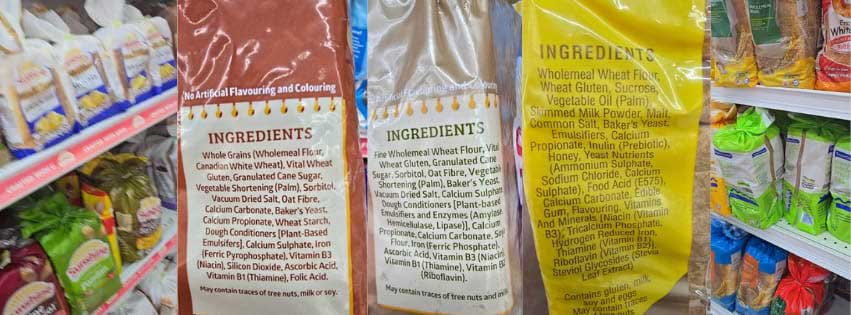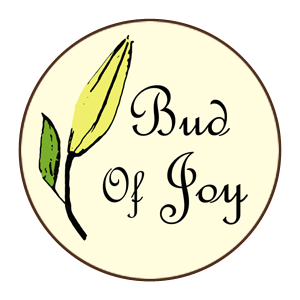And how to avoid being misled by clever packaging and vague labels.

Introduction: Food That Looks Clean But Isn’t
Walk down any supermarket aisle in Singapore today and you’ll see it—shelves lined with “clean,” “natural,” “guilt-free” baked goods. Labels whisper promises of health. But if you’ve ever flipped that packaging over, your eyes scanning a sea of unpronounceables or vague ingredient names… you know the truth: not everything that looks clean is actually clean.
In fact, a 2023 YouGov survey revealed that 73% of Singaporeans trust front-of-pack claims like “natural” or “wholesome”, yet only a fraction take time to read the ingredient list.
For customers like Rachel—people managing food sensitivities or simply trying to eat well—these misleading claims do more than disappoint. They create fear, frustration, and fatigue. She’s tired of spending money on “safe” food only to react, or be let down by dry textures and bland flavors. If that sounds like you, read on. Let’s uncover the five most common mistakes people make when shopping for “clean” baked goods—and how to avoid them for good.
Mistake #1: Trusting Buzzwords Without Proof
“Natural.” “Healthy.” “Clean.” These words are plastered across packaging like stickers on a school folder. But here’s the hard truth: these terms are not regulated in Singapore. They’re marketing terms—nothing more.
Many products labeled “natural” still contain synthetic leaveners, refined sugars, and preservatives. Some even hide behind ingredient names like “malted wheat flour” or “enzymes,” which can still trigger reactions in sensitive individuals.
✅ What to Do Instead:
Always check the full ingredient list—not just the front of the package. If the list is long, full of scientific names, or you need to Google something… that’s your sign to walk away.
❌ The Common Trap:
Believing “natural” = safe, clean, or minimally processed. It doesn’t.
📊 Stat to Know:
The Singapore Food Agency (SFA) does not regulate terms like “natural” or “clean” on food packaging.
🧁 Real-Life Example:
A “natural” bread at a major supermarket chain boasts a rustic image—but uses margarine, flavor enhancers, and synthetic stabilizers. Meanwhile, Bud Of Joy proudly lists every ingredient used—online and on every product. No small print. No secrets.
Mistake #2: Not Understanding What “Organic” Actually Means in Singapore
Here’s something most consumers don’t realise: in Singapore, the word “organic” can legally appear on a product even if only one ingredient is organic. A loaf made with organic coconut oil and everything else conventional? Still allowed to call itself “organic” unless tightly regulated.
That’s a huge problem for people like Rachel, who need every component to be safe and clean.
✅ What to Do Instead:
Look for brands that are transparent about using certified organic ingredients across the board—not just one or two “star” ingredients.
❌ The Common Trap:
Assuming “organic” on the label means the entire product is 100% organic.
📊 Stat to Know:
In Singapore, only brands with more than 95% certified organic ingredients can qualify for full organic certification under SFA or USDA guidelines.
🧁 Real-Life Example:
One bakery’s “organic sourdough” was made with conventional wheat flour, with only the olive oil being organic. Bud Of Joy, on the other hand, ensures all their ingredients—from flour to sweetener to water—are certified organic and disclosed upfront.
Mistake #3: Ignoring How the Food Was Actually Made
Even if the ingredients are clean, the process matters too. Many so-called “artisanal” baked goods in Singapore are mass-produced in overseas factories, flash-frozen, and then “finished” in-store to appear fresh.
That’s not just misleading—it also affects the nutritional integrity and digestibility of the food.
✅ What to Do Instead:
Ask: Was this handmade or machine-produced? Choose brands that bake fresh in small batches using traditional methods.
❌ The Common Trap:
Equating a clean ingredient list with handmade quality.
📊 Stat to Know:
According to Mintel, 61% of “clean-label” baked goods in Southeast Asia are mass-produced in industrial factories.
🧁 Real-Life Example:
A major “fresh bakery” brand in Singapore imports parbaked loaves from Europe, adds a crust in-store, and calls it artisan. Bud Of Joy? Every product is made from scratch, by hand, in their organic-certified kitchen right here in Singapore.
Mistake #4: Overlooking the Source of Ingredients
“Imported.” “Premium.” “European Flour.” These phrases sound fancy, but they’re often vague. Where exactly is that flour from? How was it grown? Was it sprayed with chemicals before shipping?
Traceability matters—especially when dealing with allergies or health restrictions.
✅ What to Do Instead:
Ask questions. Where are the ingredients sourced from? Are they certified organic? Are the suppliers trustworthy?
❌ The Common Trap:
Believing “imported” or “premium” automatically means better or safer.
📊 Stat to Know:
The FAO reports that 60% of organic ingredients used in Asia-Pacific are imported—but traceability is a major challenge.
🧁 Real-Life Example:
One loaf labeled “premium” used flour from a bulk distributor with no organic certification or pesticide control. Bud Of Joy builds direct relationships with certified suppliers, and is happy to show exactly where every ingredient comes from.
Mistake #5: Believing the Price Reflects the Quality
Many Singaporeans associate price with purity. But the truth is, you could pay $16 for a “supergrain” loaf that’s full of refined sugar and emulsifiers—just dressed up in kraft paper and a trendy font.
Clean eating isn’t about how much something costs—it’s about how much care and integrity goes into making it.
✅ What to Do Instead:
Look past the price tag. Look at the process, the people, and the principles behind the brand.
❌ The Common Trap:
Assuming a high price = high integrity.
📊 Stat to Know:
A 2023 Nielsen study showed 64% of Singaporeans overpaid for “health” foods that were neither healthy nor clean.
🧁 Real-Life Example:
Rachel once paid $15 for a dry banana bread made with refined sugar and soy oil. Bud Of Joy prices reflect real organic ingredients, small-batch labor, and radical honesty—not hype.
Conclusion: Don’t Let the Label Lie to You
You deserve to enjoy food that truly supports your health—without anxiety, guesswork, or disappointment.
By avoiding these five common mistakes—falling for buzzwords, misunderstanding organic claims, overlooking how food is made, ignoring ingredient sourcing, and mistaking price for purity—you become a more empowered, confident, and joyful shopper.
Ready to see what real transparency tastes like?
👉 Visit Bud Of Joy’s website and click on any item. You’ll find the full ingredient list laid out clearly—because we believe you should always know exactly what’s in your food.
Purely Baked, Lovingly Made. Because your health deserves the real deal.
About Bud Of Joy
An artisan, organic bakery providing premium baked goods designed to bring health back into food.
Address: 71 Circuit Road, #01-31, Singapore 370071
Website: https://budofjoy.com
Facebook: https://www.facebook.com/budofjoy
Article: 5 Mistakes People Make When Buying "Clean" Baked Goods
Published by Bud Of Joy on April 15, 2025


